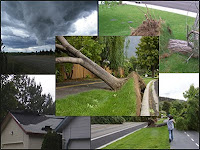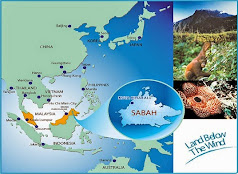
 TULLY, Australia - While Egypt is the state of chaos with bloodied protesters filled up the streets, Australia has to confronts the devastating effect of the most powerful storm in a century, ripping across Australia’s northeast coast early Thursday, blasting apart houses, laying waste to banana crops and leaving boats lying in the streets of wind and wave swept towns.
TULLY, Australia - While Egypt is the state of chaos with bloodied protesters filled up the streets, Australia has to confronts the devastating effect of the most powerful storm in a century, ripping across Australia’s northeast coast early Thursday, blasting apart houses, laying waste to banana crops and leaving boats lying in the streets of wind and wave swept towns.Authorities said they were surprised to learn at daybreak that no one had been reported killed, but cautioned that bad news could eventually emerge from communities still cut off after the overnight storm, which left several thousand people homeless.
 Hundreds of thousands of people spent the night huddled in evacuation centres or bunkered in their homes as the cyclone hit, packing howling winds gusting to 300 km and causing tidal surges that swamped coastal areas.
Hundreds of thousands of people spent the night huddled in evacuation centres or bunkered in their homes as the cyclone hit, packing howling winds gusting to 300 km and causing tidal surges that swamped coastal areas.- “Nothing’s been spared. The devastation is phenomenal, like nothing I’ve ever experienced,” David Brook, the manager of a resort at Mission Beach, where the core of the storm hit the coast around midnight, told Australian Broadcasting Corp. radio.
- At Innisfail, acres (hectares) of banana trees lay snapped in half, the crops ruined, and power poles had been snapped in half by the winds.
- The main highway leading south was cut by tidal floodwaters, and hundreds of cars were parked nearby as people who had evacuated Wednesday to get home to see what was left.
 Towns around Mission beach were hardest hit. In Tully, a town of 3,500 people, one in three houses were reported to either have been demolished by the storm or had the roof ripped off, Queensland state Premier Anna Bligh said.
Towns around Mission beach were hardest hit. In Tully, a town of 3,500 people, one in three houses were reported to either have been demolished by the storm or had the roof ripped off, Queensland state Premier Anna Bligh said.- Further south, emergency workers had cut their way into the coastal community of Cardwell on Thursday morning and found older houses wrecked and boats pushed up into the town, she said. The entire community was believed to have evacuated before the storm.
- Electricity supplies were cut to almost 180,000 houses in the region — a major fruit and sugarcane—growing area and also considered a tourist gateway to the Great Barrier Reef — and police warned people to stay inside until the danger from fallen power lines and other problems was past. More than 10,000 people in 20 evacuation centres were being told they could not leave yet.
 Australia’s huge, sparsely populated tropical north is battered annually by about six cyclones — called typhoons throughout much of Asia and hurricanes in the Western hemisphere. Building codes have been strengthened since Cyclone Tracy devastated the city of Darwin in 1974, killing 71 in one of Australia’s worst natural disasters.
Australia’s huge, sparsely populated tropical north is battered annually by about six cyclones — called typhoons throughout much of Asia and hurricanes in the Western hemisphere. Building codes have been strengthened since Cyclone Tracy devastated the city of Darwin in 1974, killing 71 in one of Australia’s worst natural disasters.

















Post a Comment